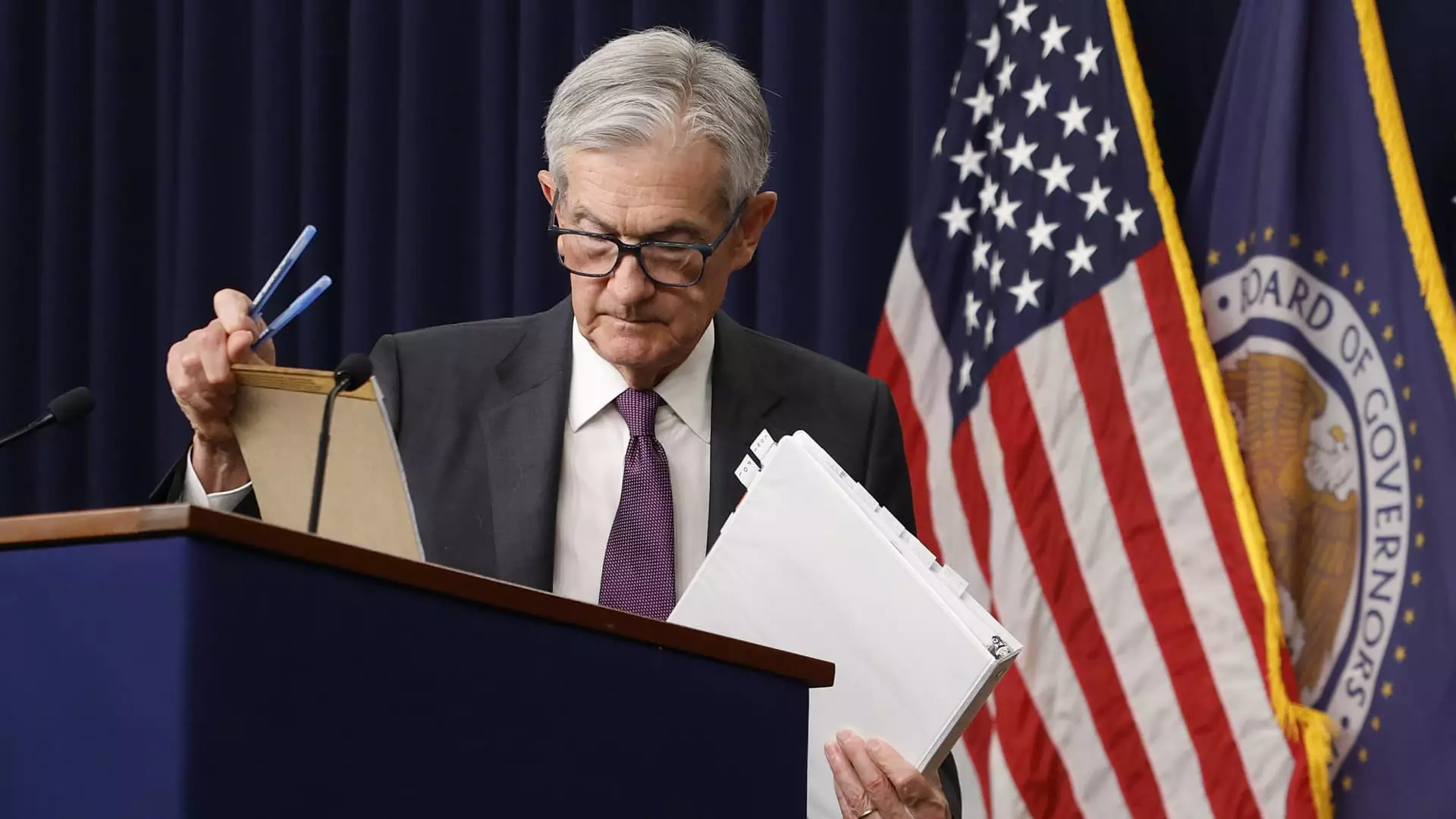In a rapidly shifting economic landscape, Federal Reserve Chair Jerome Powell stands at a crossroads, attempting to balance the urgent conflict between controlling inflation and fostering economic growth. This precarious state has emerged prominently in his latest address to the Economic Club of Chicago. Powell’s sentiments stirred anxiety as he confronted the ambiguous implications of President Trump’s tariffs, cautioning that a delicate equilibrium may become increasingly elusive. The essential question looms—should the Fed prioritize stabilization of prices, or should it steerclear towards promoting full employment?
His remarks encapsulate a broader dilemma that not only affects monetary policy but also pits economic principles against one another. Powell specified, “We may find ourselves in the challenging scenario in which our dual-mandate goals are in tension.” The dilemma lies not just in theoretical discussions but in real-life consequences faced by everyday Americans—many fear that inflationary pressures may devour their purchasing power while growth stumbles.
Expectations and Uncertainties
Uncertainty looms like a storm cloud, fueled by tariffs that act like a double-edged sword. While they may protect certain domestic industries, they introduce an unseen tax burden that disproportionately affects consumers and can exacerbate inflation—a phenomenon Powell has described as “a one-time hit” to prices but warns could become a persistent headache. He notes, “the inflationary effects could also be more persistent,” a chilling forecast that diverges from the Fed’s dual mandate to anchor inflation expectations.
This contention reflects a larger ideological battle. Should we protect domestic production at the expense of consumers? Powell’s cautionary words signal the increasing complexity of navigating these waters. Economists generally agree that while tariffs may cause short-term inflation spikes, they could also translate into long-lasting impacts on purchasing power for Americans. The central bank must remain vigilant; they cannot afford to solely react to short-term pressures without considering the long-term ramifications.
The Expected Slowdown
A palpable sense of slowdown is evidenced in Powell’s remarks about GDP growth, which is predicted to hover at a meager pace. Even as he describes the economy as being in a “solid position,” the juxtaposition of this assertion against a backdrop of stagnant progress reveals the uncomfortable truth that major growth might be an elusive goal. The forthcoming GDP report for the first quarter will be a critical indicator, expected to show little robustness, with Powell admitting that growth figures show a distinct slowdown from the previous year.
Retail sales figures reported by the Commerce Department provided a brief glimmer of hope, reflecting a surge of 1.4% in March. However, much of that increase stemmed from consumers rushing to make purchases ahead of the impending tariffs. Such an artificial spike reflects not a sustainable trend but a frantic response to uncertainty, painting an unsettling picture of a consumer base poised on the precipice of inflation-induced financial strain.
Implications for Interest Rates
When it comes to interest rates, the Fed’s indecision looms large, further compounded by Powell’s insistence on waiting for “greater clarity.” The financial markets seem to be reacting, tumbling in response to Powell’s cautious stance on potential interest rate adjustments. The anticipated cuts by mid-2025 may seem like an elixir, but they pose their own risks, inviting inflationary pressures in a misleading recovery phase. In an increasingly interconnected world, the Fed must tread carefully; a hasty decision could have ripple effects across global markets, further skewing an already fragile recovery.
Powell’s emphasis on maintaining inflation expectations reflects his deeper understanding of the psychological dimensions of economic policy. If consumers and businesses anticipate rising prices, their behavior may inadvertently generate the very inflation the Fed seeks to control. This predisposition places Powell at the nexus of policymaking, with his every word interpreted as a crucial signal for market players.
A Call for Vigilance Amid Political Maneuvering
As politics intertwine with economics, Powell’s path to equilibrium grows ever more fraught. Each economic decision resonates not only within the confines of the Federal Reserve but across the broader national landscape. With tariffs at the helm and economic indicators reflecting a precarious balance, the Fed’s ability to maneuver through these turbulent waters will reveal its mettle.
In this politically charged atmosphere, Powell’s challenge goes beyond simple economic metrics; it encompasses the larger ideals of democratic governance and accountability. Striking a balance between repression of inflation and promotion of growth aligns with the values of a progressive economic narrative. In the long run, the stability of the economy lies not merely in abstract figures or federal approaches, but in the hands of individual citizens seeking to thrive amidst uncertainty. The tension between these two key mandates might necessitate an evolving understanding of what constitutes true economic health—one that honors both price stability and robust employment opportunities for all.

